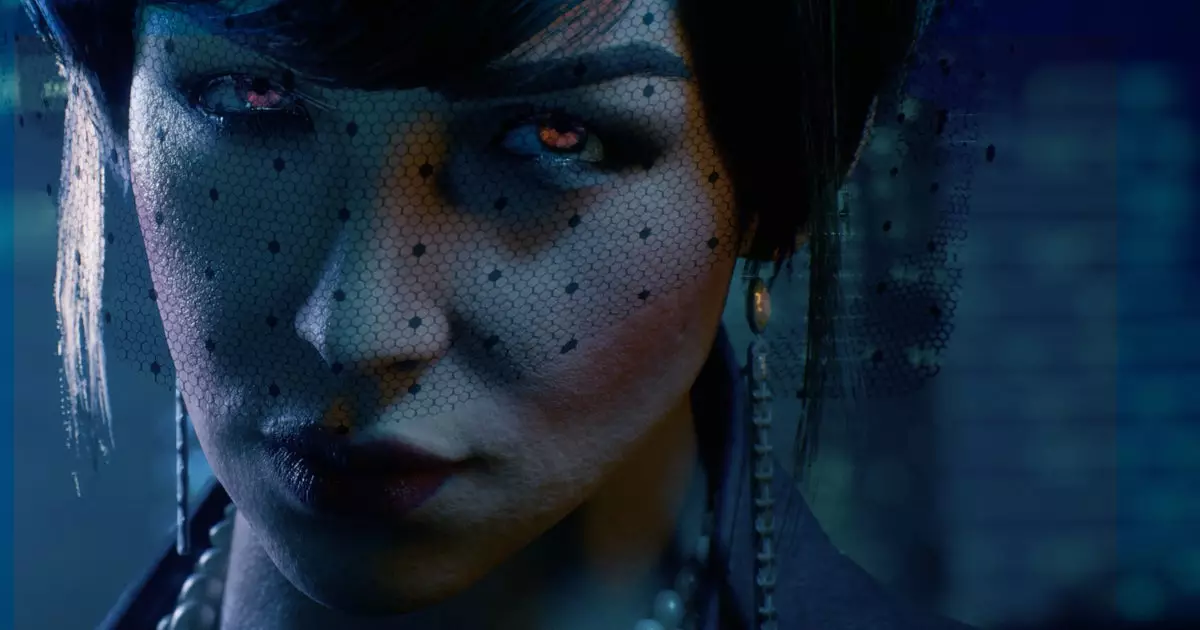Vampire: The Masquerade – Bloodlines 2 has become a focal point of discussion for both fans of the original game and newcomers alike, especially with its shift in direction under The Chinese Room’s development. Originally promising an open-world simulation akin to its 2004 predecessor, the sequel is now being framed as a more linear, action-oriented RPG. This transformative approach raises various questions regarding storytelling, gameplay expectations, and the legacy of the original title.
At the heart of this transformation lies an intriguing partnership between Paradox Interactive and The Chinese Room. While Paradox has emphasized a clear vision for Bloodlines 2, they have also recognized the limitations of imitating a game over a decade old. Mattias Lilja, Paradox’s deputy CEO, candidly noted that the initial design proposal from Hardsuit Labs, the project’s original developers, faced challenges in execution. The decision to hand the project over to The Chinese Room signifies not only a shift in studio but also a renewed commitment to creating a title aligned with contemporary gaming sensibilities.
What does this mean for players? For one, the emphasis is now on crafting an action-RPG experience endowed with rich narrative elements—an area where The Chinese Room has consistently displayed strength, especially with works like “Still Wakes the Deep.” Lilja’s reassurance that this sequel will offer a robust storyline reflects an understanding that modern gamers expect more structured narratives, especially in settings as dense and complex as the World of Darkness universe.
One of the most salient points made during discussions about Bloodlines 2 is the notion of nostalgia. The original Vampire: The Masquerade – Bloodlines has been mythologized in many ways, with its legacy often overshadowing its actual gameplay mechanics. Lilja pointed out that the memories fans hold may not accurately represent the game’s realities. As many devotees of older games might attest, revisiting such titles can sometimes lead to disappointment if one’s expectations are not managed.
By subsequently framing Bloodlines 2 as a spiritual successor rather than a direct sequel, Paradox is taking proactive measures to mitigate potential backlash from fans expecting an exact replica of the original experience. The acknowledgment of the original game’s outdated mechanics suggests that the new title intends to innovate and explore fresh territory rather than retrace tired steps.
The journey of Bloodlines 2 has not been smooth sailing; the game has faced multiple delays, changes in development, and even creative leadership shifts—most notably with Brian Mitsoda’s departure. In examining these challenges, it becomes evident that Paradox’s strategy is evolving to adapt to unpredictable development landscapes. Lilja’s comments mirror a broader industry trend where studios are compelled to recalibrate their focuses and approach risk more prudently.
Despite these hurdles, Lilja purports that there is optimism regarding the eventual release and market performance of Bloodlines 2. The aim to at least break even represents a cautious financial outlook, but it also underscores a broader understanding that quality game design requires time and flexibility. As the gaming community awaits the release of Bloodlines 2, it’s crucial to temper expectations, keeping in mind the refined focus on linearity as opposed to the extensive open-world experience originally anticipated.
While the shift away from an open simulation to a more structured action RPG model may disappoint fans of the original game, The Chinese Room’s competence in crafting atmosphere and immersive storytelling is noteworthy. The promise of an evocative representation of the World of Darkness is significant; players can expect a game steeped in rich narrative and emotional weight rather than one preoccupied with complex player-choice mechanics.
Bloodlines 2 symbolizes a broader evolution within the gaming sphere, where nostalgia for past titans must compete with the expectations of modern gamers. The Chinese Room demonstrates an intriguing blend of reverence for the original’s spirit while charting a fresh path that emphasizes narrative cohesion and gameplay quality. Whether this sequel can reclaim the vibrancy of its predecessor or carve out a new legacy entirely remains to be seen, but as we await its impending release, curiosity and cautious optimism linger in the air.

